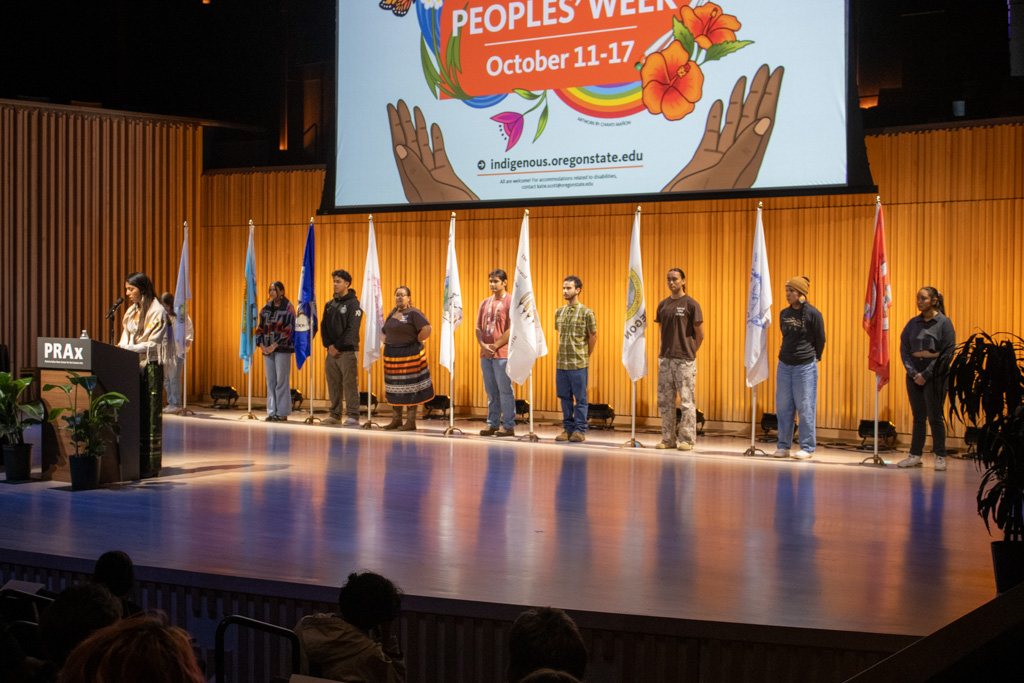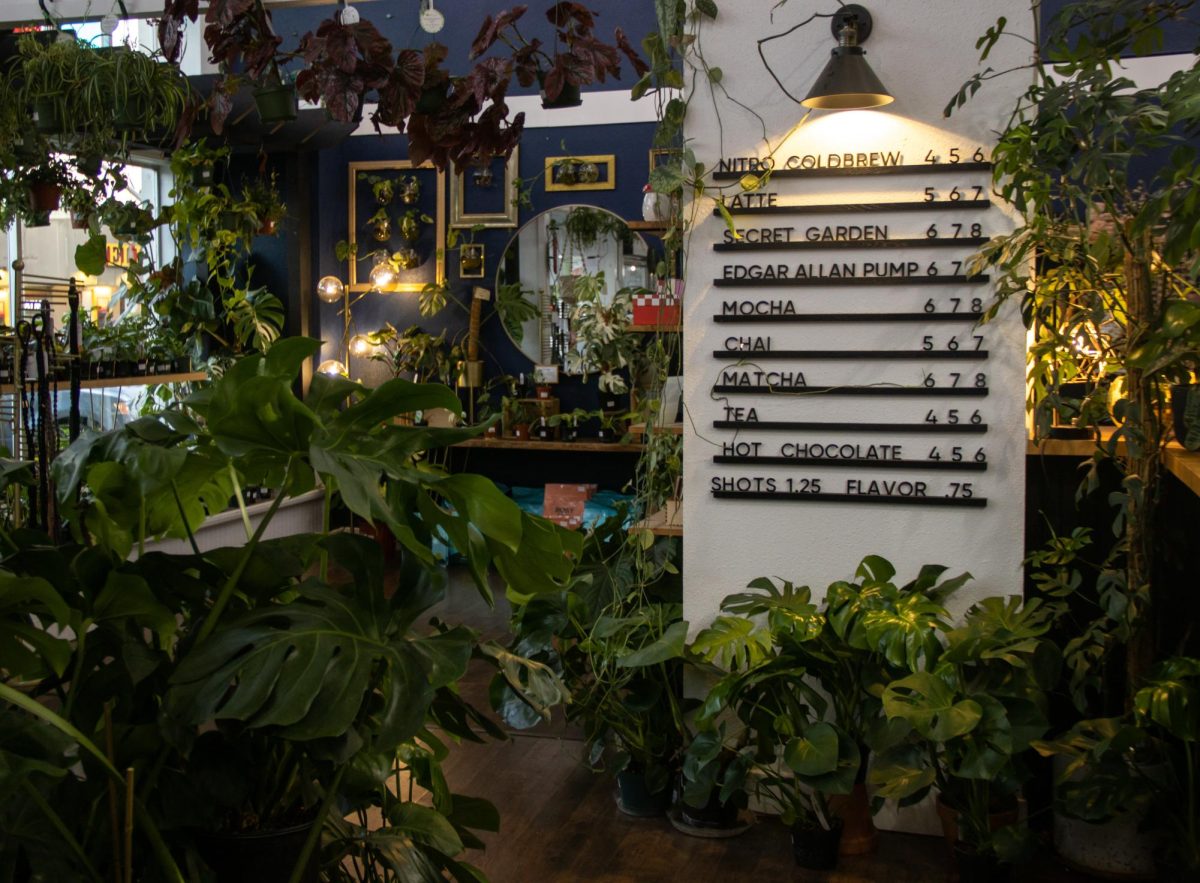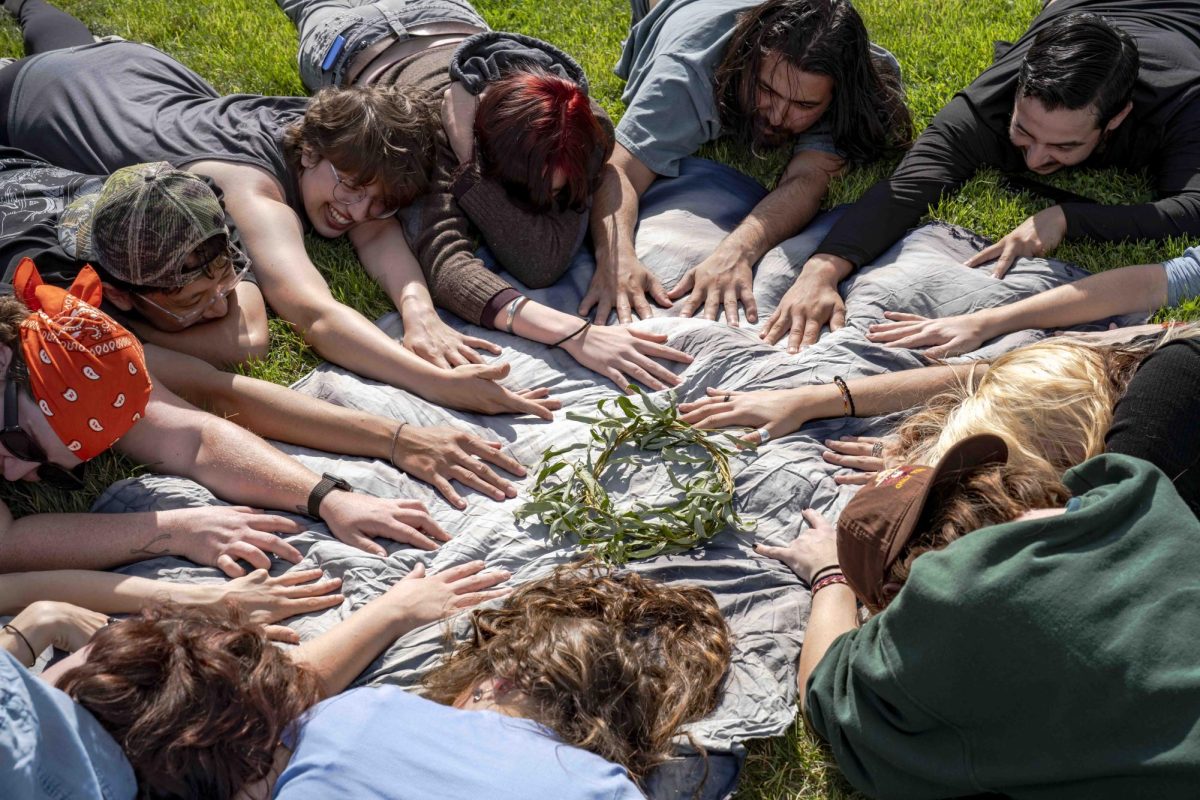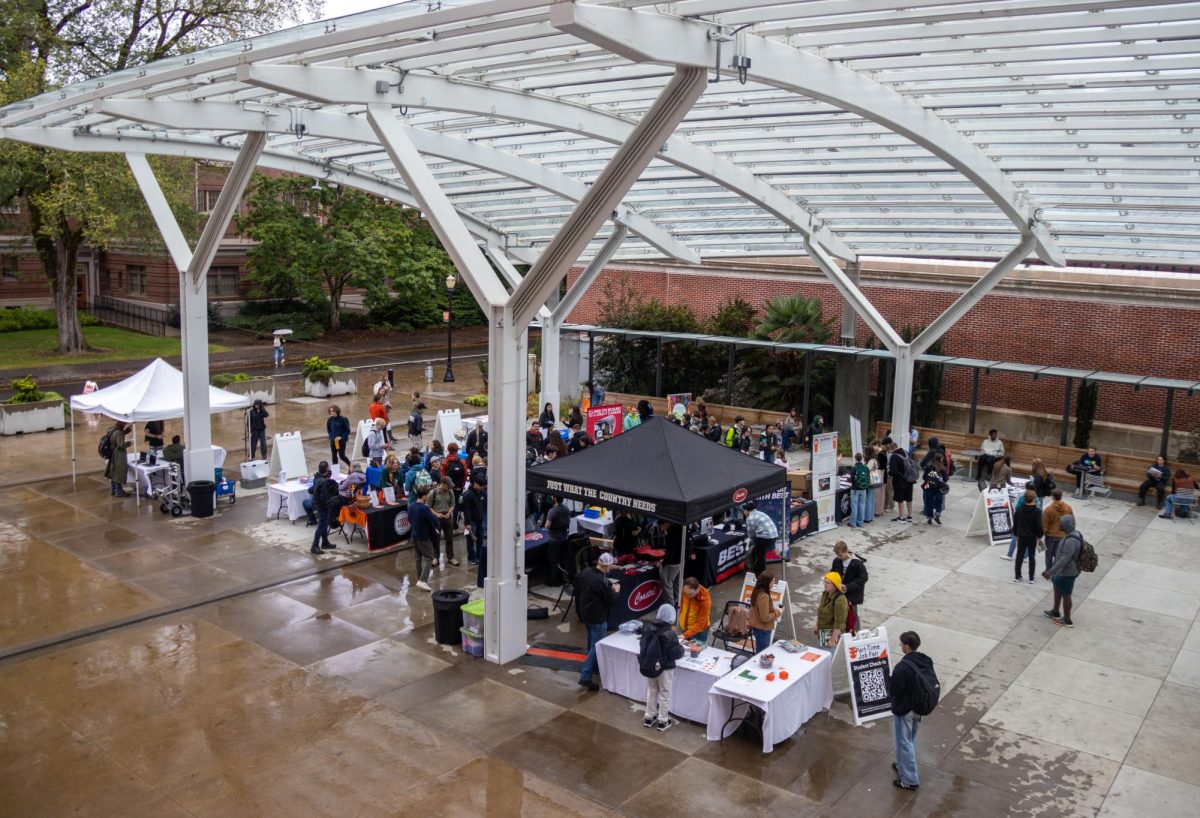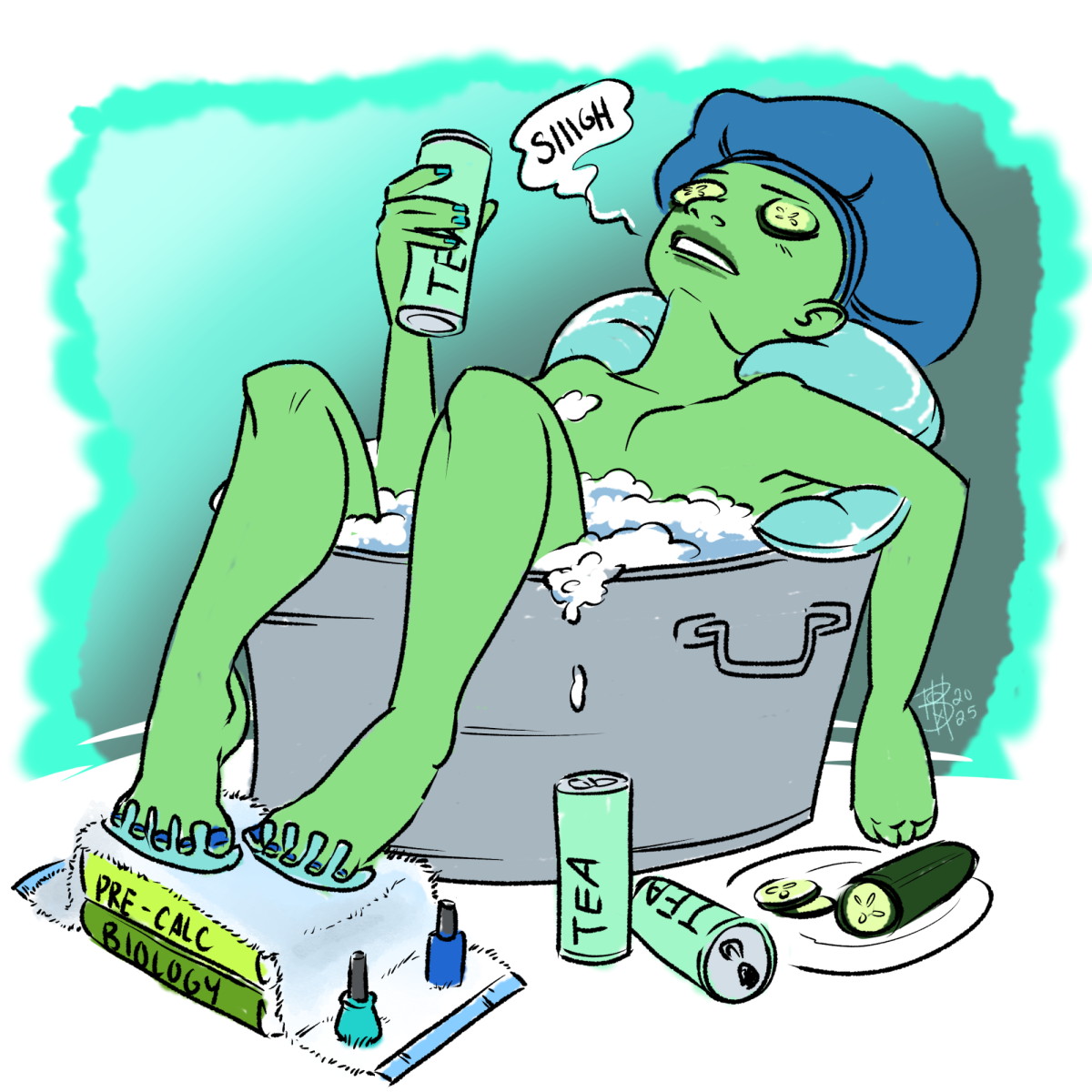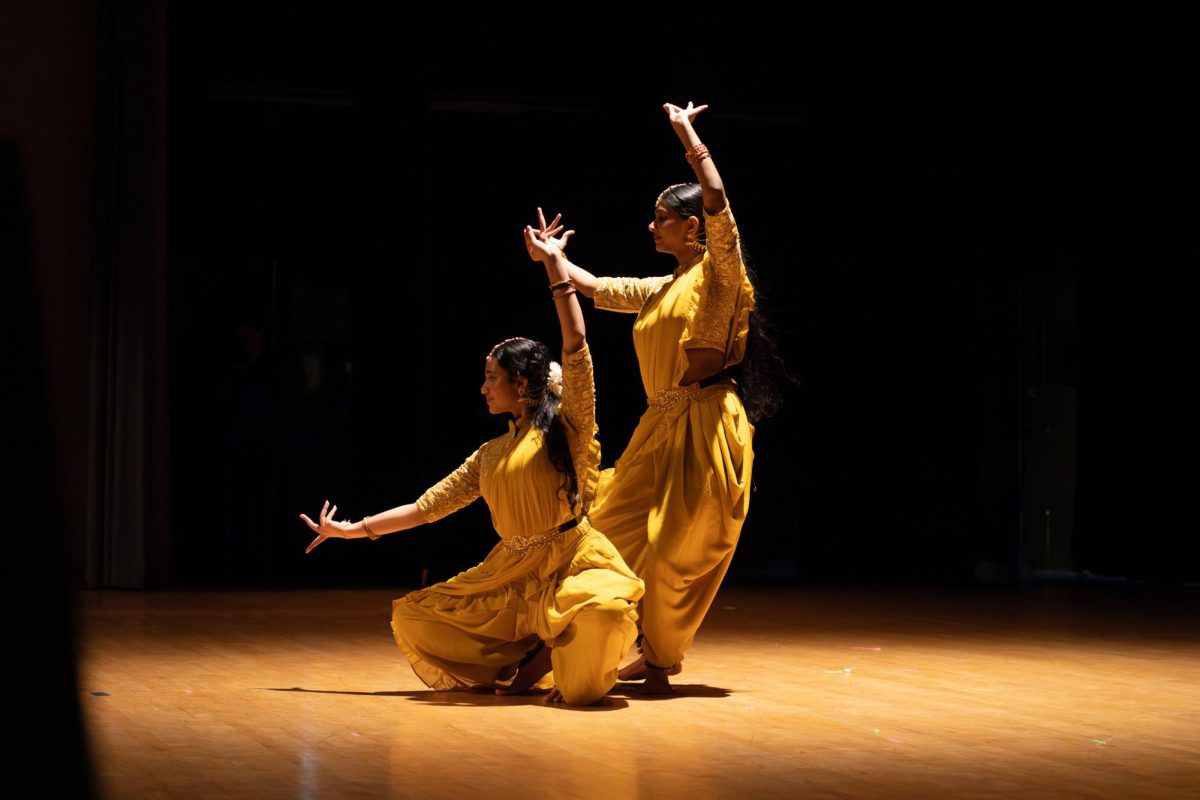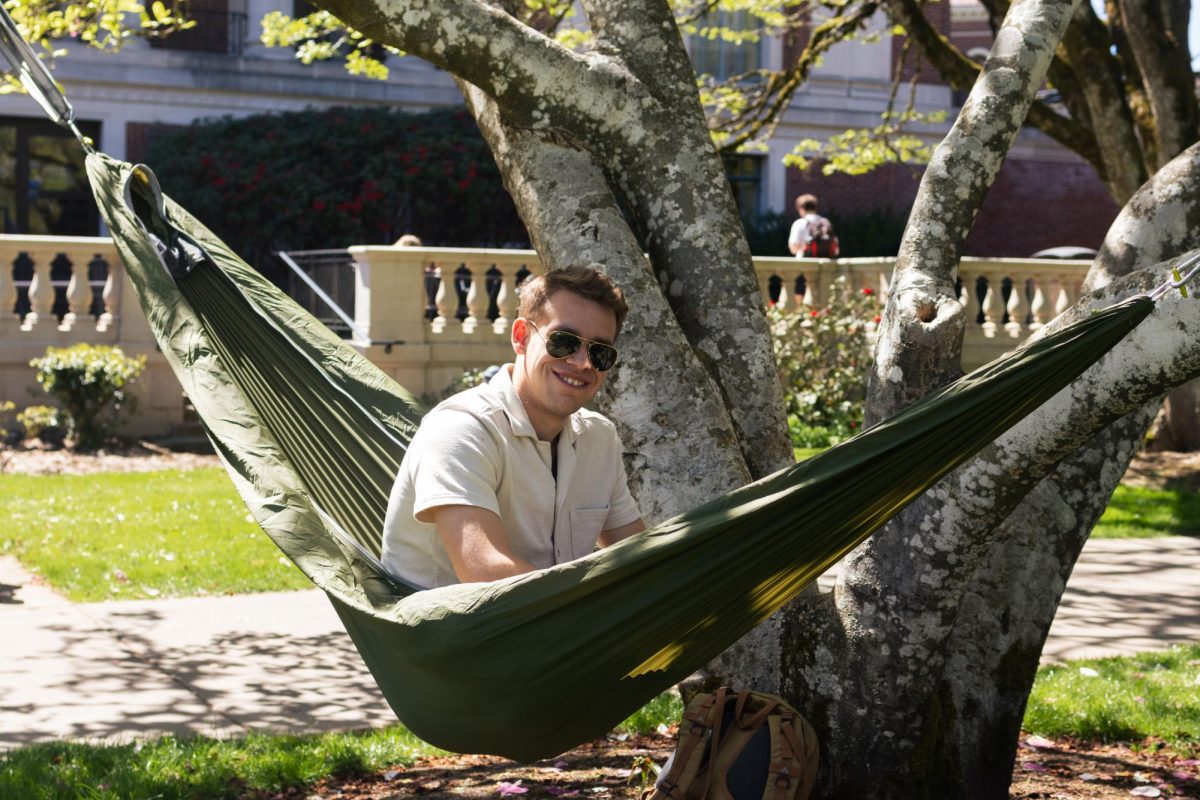Every atom from his body to his bass originated from the “pure energy” of the soil, whether it was under the feet of hundreds of thousands of fans or on the Oregon State University’s organic farm.
James Cassidy has been a bassist in the band, “Information Society,” since the 1980s. He began playing the guitar at age 10 after being dropped off at his sister’s lessons. Not caring for the instrument, the guitar teacher suggested Cassidy play the banjo.
He learned clawhammer style, a traditional African style of playing, in the small town of New Brighton, Minn., but was always more influenced by jazz.
“I understood syncopation and I understood folk and jazz music, my dad had jazz records and stuff,” Cassidy said. “So I was pretty, I am pretty musical.”
Getting into heavy metal in high school, Cassidy traded his banjo for the bass. At age 14, he began performing in multiple bands, one of them being InSoc.
InSoc members, which included Paul Robb, Kurt Harland Larson and Cassidy, circled each other as the “outcasts,” in school, getting familiar in art classes.
It was a dangerous time to be anything but a “jock,” in the 70’s of high school, Cassidy explained, and Cassidy identified himself as a “weirdo.”
“I had friends from all different walks of life and a lot of times they weren’t very friendly to each other,” Cassidy said. “My role has always been sort of stitching people together and sort of collecting people.
Experimenting with electronic music, which was gaining popularity in Europe, they pulled inspiration from bands such as YELO from the Netherlands – there wasn’t much influence in the United States.
“About 250 people would show up from the St. Paul, Minneapolis area who were new wave outcasts, weirdos, queer culture, multicultural, just, you know, all the people who were sort of on the outside,” Cassidy said.
InSoc was known to be “ahead of their time,” in that electronic music was a thing of the future.
One of their most famous songs being “Pure Energy,” they set the stage with their color-coded jumpsuits and head-bob dancing.
Cassidy said that everybody hated InSoc in Minneapolis, because they were used to all guitar bands and punk rock. InSoc was more of an “electronic punk rock band.”
“We had bigger ideas, about technology and the future,” Cassidy said.
Eventually, InSoc wrote a song that was a huge underground hit in New York City’s Latin hip hop dance scene.
“We were always open to new influences,” Cassidy said. “It was a high speed electronic sound. So we made a song called ‘Running,’ which we channeled some of that. It was also the first song ever to have digital sampling in it, …because all (Latin hip-hop and break-dance) style of music was basically a type of sampling.”
Being a world sensation wasn’t just in sampling, according to Cassidy,
In the early 1990s, Brazil transitioned from a dictatorship to a democracy, and their world “opened up for Brazil in a way it hadn’t before,” Cassidy said.
InSoc performed at Rock-n-Rio, a music festival in Rio de Janeiro in 1991, in the largest stadium in the world. There were 180,000 concert-goers to watch InSoc, along with bands like Guns and Roses, Prince and AHA.
“All the young people in Brazil were very optimistic and they wanted the world,” Cassidy said.
In that era, Brazilians didn’t want to listen to Brazilian music, and listening to other worldly music, InSoc had a number one record at the time.
With an English rock band sound and African American syncopated beats–which sounded more like Brazilian beats–Brazilians fell in love with the band.
“It was the whole country that identified with us as being that band at that moment in the history of Brazil,” Cassidy explained.
The cultural significance of InSoc to Brazil has kept them returning to perform six to 12 shows a year as well as to multiple cities such as Mexico and other places in the United States.
“We’re kind of still famous there,” Cassidy said. “We have an actual fan base. So they like to hear our new music. So it’s not just like, people in the eighties come and see us. It’s like our fans come see us.”
As the band gained more fame, it only added pressure to the bandmates and began crushing their creative process and relationship working together.
So, Cassidy quit the band four times.
Walking away for what he believed was the final time, Cassidy enrolled in community college before starting in his junior year at Oregon State University.
“I never went to school, because I was a D-minus stoner rock and roller in high school,” Cassidy said.
Thinking he’d be a fish farmer, Cassidy studied fisheries and wildlife sciences at OSU with a fisheries emphasis as an undergraduate student. He had an interest in water quality because of fish, and began considering the importance of soil.
“It’s all about soil, actually,” Cassidy said. “Even technologically, even techno music is about soils.”
Cassidy ended up earning a master’s degree in soil science and began substitute teaching in soil science. Teaching was just another form of performing to Cassidy, and instantly knew how to hold the attention of young people, as he did in his entire past life.
“I remember walking out,” Cassidy said. “There was a light on me, it was on stage, it was like, holy shit–I totally know this…, I never thought my rock and roll life would be something I would use again.”
Cassidy doesn’t really relate to the A and B students, but rather the C and D students, helping them find their path like he once did. He says he’s good at his job because he loves his students.
“Researchers don’t have the time (to teach)…they’re busy trying to get money to publish papers,” Cassidy said. “And then they’re supposed to inspire the next generation of students…They hated all those kids in high school because they picked on them because they were science geeks or whatever so (researchers) don’t like those students, I relate to them.”
When students inquired why they didn’t learn about organic agriculture in their classes, Cassidy said they should start their own farm.
The Organic Growers Club was born, with every Thursday being their network party to serve hot supper from 4:40 p.m. to 7 p.m., and Sunday mornings from 9 a.m. to noon are for Sunday SKOOL, where they sell all the vegetables they grow, where they have for the past 23 years.


